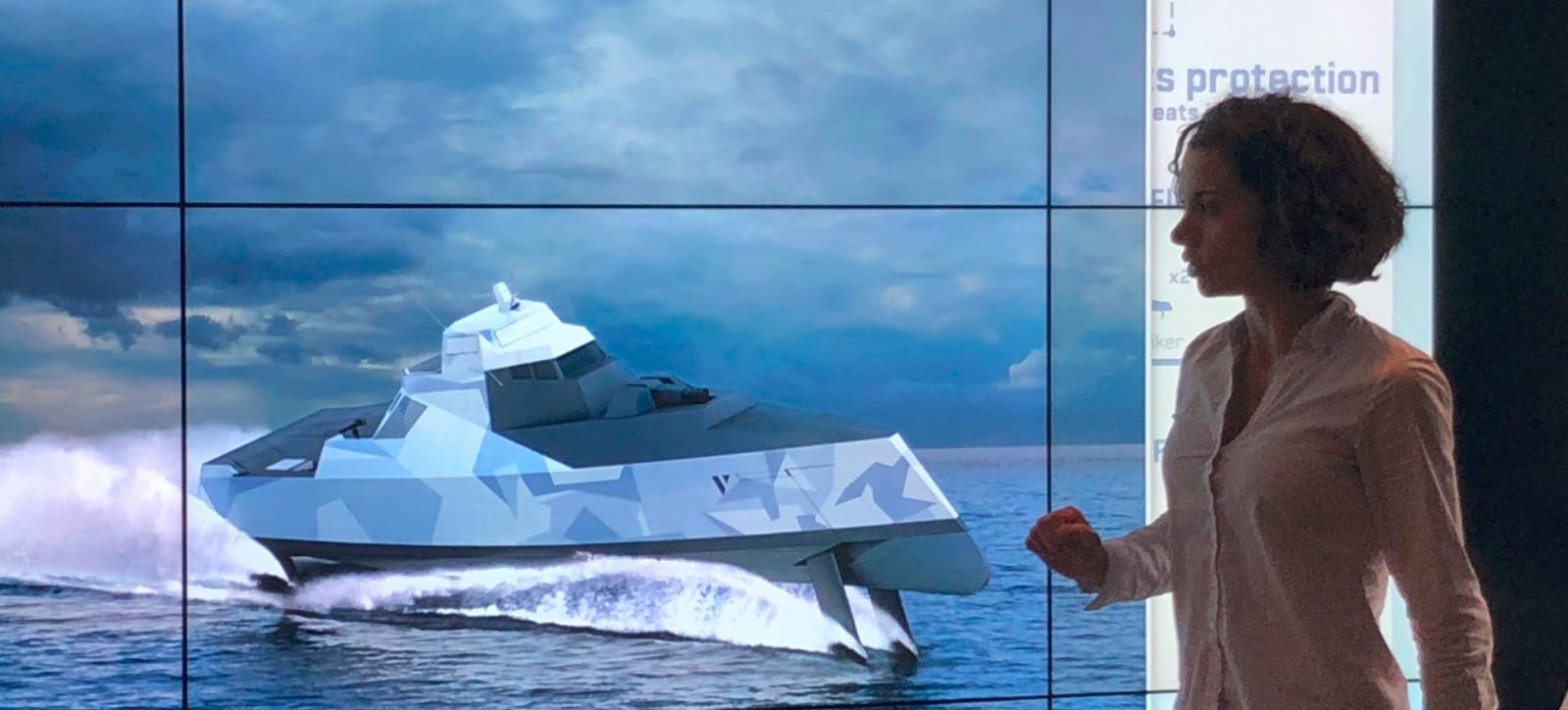Besides her a rational “Cartesian” character, Alexis is also a free spirit who breaks down the walls of preconception. Through her role as R&D architect, she focuses on providing tangible proof of how technological choices impact the performance of surface ships. Here, performance must be understood in the broad sense: speed, sea life, maintainability, fire-power, stealth, communicability, cybersecurity, etc.
A view without preconceived ideas
“My timeline is around 15 years: how will the war of the future be waged? What operational capabilities will we need in the face of variable and little-known threats? What technological choices can be made to guarantee the robustness of ships and make them ever more reliable? It takes a holistic, fresh and pragmatic view, without preconceived ideas, to imagine the ship of tomorrow, one that's adaptable, resilient and scalable,” explains Alexis Blasselle.
Listening: the basis of the thought process
With her mind continually bent on how to integrate incremental or disruptive innovations into surface ships, the starting points for Alexis are listening and exchange. Since technologies are a response to a need, this need must first be identified before starting to look for solutions. “My starting point is dialogue. I talk to operational staff to understand their challenges and find out how they see future developments. This ensures that our innovation is guided by the performance of our customers”. Based on operational needs, Alexis' responses may be unexpected since they reverse the paradigm. "I often take the example of an invisible ship. No seaman will ever ask us for this, but if we propose it, they will be able to make excellent use of it as it meets one of their operational challenges, namely, not being seen".
Maths, and more maths
Time for maths! To explain the choice of technological building blocks favoured by Naval Group, Alexis sees only one course of action: mathematical calculations, and complex ones at that, as, in her view, this is the only way to be credible. And this is the essence of the Concept Lab: demonstrating Naval Group’s ability to assess how effectively the technological solutions selected at the R&D stage can meet operational challenges, by calculating their concrete performance. “With the Concept Lab, we demonstrate both our knowledge of operational constraints and our proficiency in the latest cutting-edge technologies such as quantum physics, innovative materials or artificial intelligence”. The Concept Lab thus offers four operational scenarios that are relevant in cooperative warfare missions and in complex environments.
Concept Lab 2020: four operational scenarios
Anti-aircraft warfare, anti-submarine warfare, evacuating nationals and protecting oil platforms in exclusive economic zones (EEZ) are the four scenarios of the Concept Lab. All involve calculations to objectify the technological choices made.
The fourth multi-threat scenario serves to compare two types of response: two patrolling Sea Strikers* on the one hand (distributed model), and one corvette and its helicopter on the other (centralised model). Both configurations boil down to a surveillance mission. The threats retained are a Sea Skimmer-type missile, two pirate boats and a swarm of suicide mini-drones. The calculations made give level-2 indicators (these are NATO-type operational effectiveness measurements). The distributed model solution (Sea Strikers) clearly demonstrated its superiority.
*Concept ship developed by Alexis and her teams in 2019, designed with performance logic.

